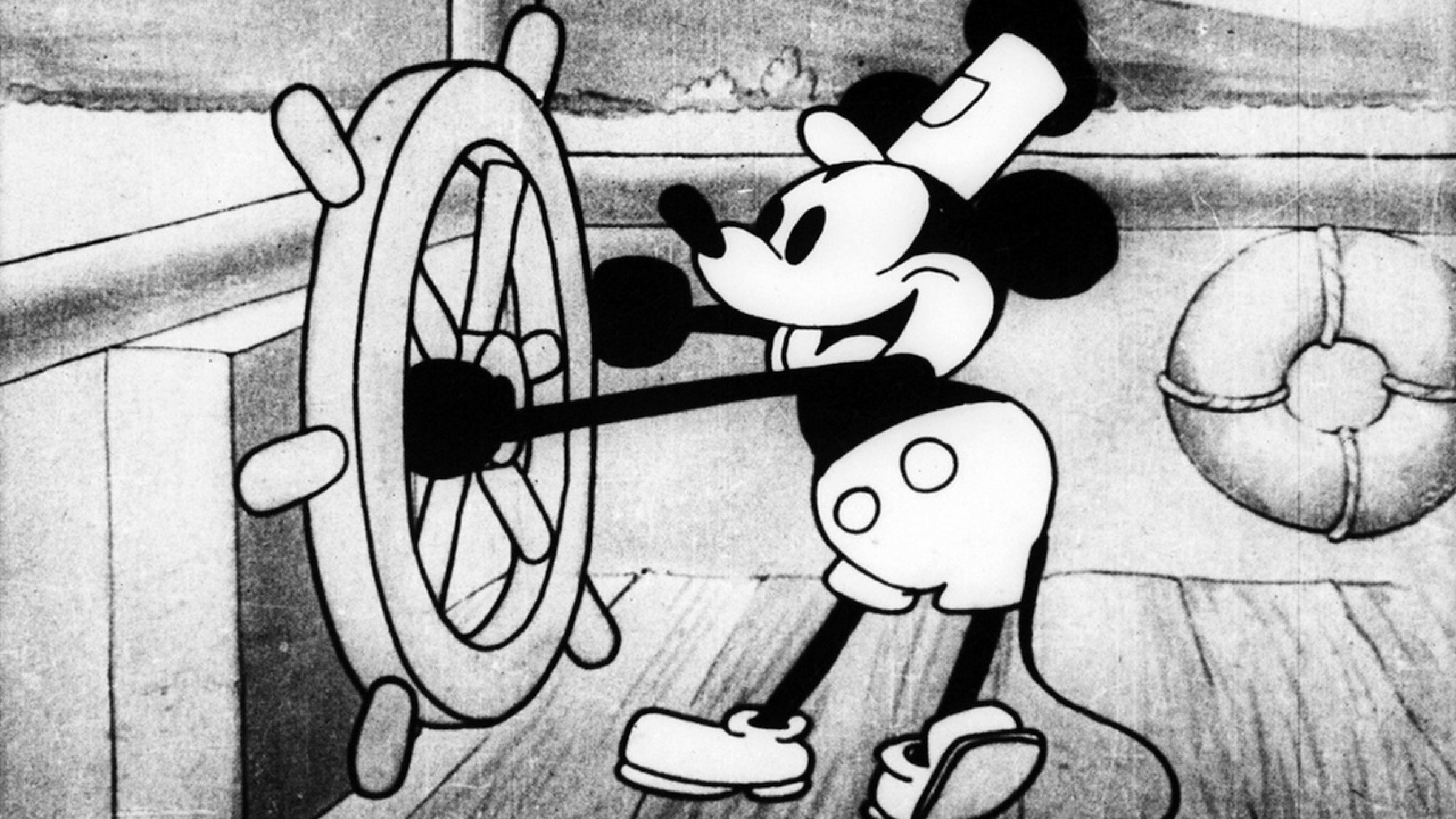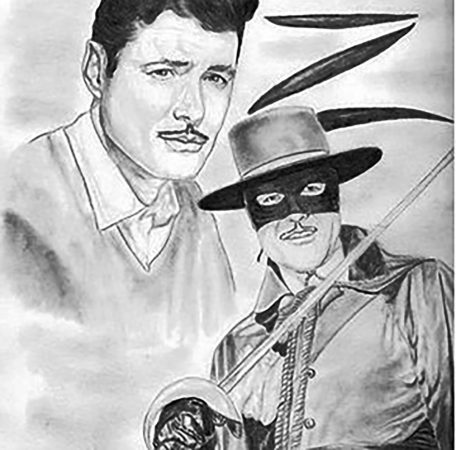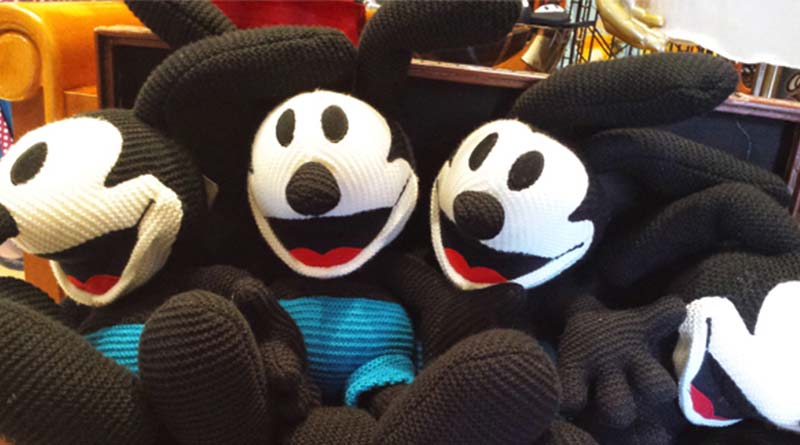
Mickey Mouse-How and Why he was created…
It is hard to believe that Christmas, 2020 is only a few weeks away. Most in the country will not mourn the passing of this gloomy and for many, a sad year. As the country strives to return to normalcy, it still seems far in the distant. Although Walt Disney World is opened, it is with many restrictions during the “phased” re-opening. I even let my annual pass expire, even with the extra four months tacked on by Disney for the “Covid” situation, because I rather wait for a full returning of the World and its offerings.
So, I have decided to write another article on the reason that Walt Disney World is here, and that is Mickey Mouse. Yes, perhaps more has been written about the Mouse with the exception of Walt Disney himself. Mickey is the cohesive unit of the Walt Disney Company, for without him, Walt and company might have ended as a footnote in history. However, Walt Disney said it best…” Let’s not lose sight of one thing, that is all started with a Mouse”. Let’s take another look at Mickey and Walt, to remind us of how and why the Mouse came about, and why we all miss Walt Disney World in its entirety…
Walt Disney had loved drawing and art as long as he could remember. He once said I became interested in drawing “almost as soon as I could hold a pencil”. Walt had many who encouraged his artistic love; his mother Flora, teachers and especially his Aunt Margaret, who always brought Walt a gift, primarily drawing supplies, a Big Chief drawing tablet and pencils. She was a constant supporter of Walt. Another personage was, retired Doc Sherwood. Sherwood and his wife had no children, took a shine to Walt and spent much time together. Sherwood owned a prize stallion named Rupert. One day, Rupert was a bit cantankerous, and told young Walt to bring his crayons and tablet and sketch the horse. Walt recalled that “the result was pretty terrible”, but the Doctor and his wife praised him warmly. Several versions of the story were told, one said the Doc gave Walt a nickel for the piece, which was uncharacteristic of the tight-fisted Doctor. One story stated the Doc hung the picture in his house. But whatever version, Walt’s brother Roy said…” The drawing was the highlight of Walt’s life”
To Walt’s dismay, the one person who never supported or encouraged him was his father, Elias. Walter Elias Disney was born on December 5th, 1901 on 1249 Tripp Ave in suburbs of Chicago, in then what was known as the Northwestern section of the city. Elias purchased this plot of land for $700.00 with the help of his brother Robert’s real estate connections. The area was primitive, but Elias a carpenter, utilizing skills he learned working on the Union Pacific Rail line, constructed a neat two-story wood cottage. Many people do not realize that Walt had three brothers and a sister. Herbert, Raymond, Roy and Ruth.
Elias was a hard-working, deeply religious man. Exceedingly frugal, he did not believe in frivolities, jokes and did not laugh much. The only time he let his hair down so to speak, is when he was playing the fiddle. This lifestyle most likely evolved from what he considered a life of failures. No matter what endeavor he attempted, he never succeeded. He wanted his sons to be successful, not like himself. Although he loved his children, he never wore his heart on his sleeve.
The great change in Walt’s life was about to come. In 1906, Walt was just four when two boys about the same age as Herbert and Ray attempted to rob a car barn, and killed a policeman during a shootout. Elias was shocked to think his sons could also be led amiss, and with the area becoming more lawless, he decided to move to more wholesome environs. It is this decision and the destination that would, in all cases effect Walt in his outlook and decisions for the rest of his life.
Elias moved to an isolated Missouri town and purchased farmland there from his brother Robert. Marceline Missouri, and although Walt only lived there for four short years, his wife Lillian stated that…” Marceline was the most important part of Walt’s life” “He didn’t live there very long, but there was something about that farm that was very important to him”. There was much truth to that. It was here on the farm that Walt developed his love of animals, his love of trains, because his uncle Mike Martin was an engineer on the Santa Fe Railroad, which went through Marceline and he would sometimes stop and visit, and his love of the simple life of rural Americana. This was evident in the early Mickey Mouse shorts, were many of the stories revolved around barnyards, farms, and anthropomorphic animals were all part of the story. Many classic characters, I.E. Horace Horsecollar, Clarabelle Cow, Donald Duck and Goofy reflected this love. But it was the one and only Mickey Mouse that saved and made the Disney Brothers Studios what Disney is today.
After four short years, Elias’ farm was failing. As hardworking as he was, he was not a farmer. That and falling crop prices, a five-month coal strike and the final blow, Elias contracted typhoid fever, leaving him weak and unable to work. Admitting defeat, the Disney’s moved to Kansas City, Missouri. During the next six years, Walt worked on a paper route his father purchased, and attended art classes at the Kansas City Art Institute and even took a correspondence in the new craze of cartooning. In 1917, Elias moved back to Chicago, and purchased stock in the jelly company, O-Zell. It was the start of World War I that Walt would chart a course in animation and film that would give the world, Mickey Mouse. When the United States entered WWI, Roy entered the in the United States Navy from 1917 to 1919. However, he contracted tuberculosis and was therefore discharged from military duty. It was his convalescence in California that was the beginning of the Disney Brothers Studio.
Walt also wanted to join and fight, but he was too young. So, he and friend Russell Maas schemed to enlist in the ambulance corps, but that backfired. Even though Walt was only 16, he begged his parents to sign for him to enlist in the corps. After much cajoling, they gave in. But by the time Walt arrived in late November, the armistice was signed and the war over. Before returning to Kansas City in October, 1919, he had some of his work published in the army newspaper, “Stars and Strips”. He also drew cartoons and caricatures on the side of his ambulance. Upon returning, he wanted to work for the “Star” newspaper as an office boy. Elias, was aghast that he wanted to draw and write, when he could work at the Jelly factory, but Walt was adamant. The Star thought he was too young. So, brother Roy told him the Pesmen-Rubin Commercial Art Studio needed an apprentice. Walt grabbed samples of his drawings, and was hired on the spot. It was here that Walt befriended perhaps the most important and influential person other than Roy, a fellow artist Ubb Iwwerks.
After the Christmas rush, both Ubb and Walt were laid off. Walt, still dreaming of becoming a comic strip artist, started their own concern, the short-lived Iwerks-Disney commercial Artists. With not many customers, Disney left Ubb to run the business while he worked at the Kansas City Film Ad Company. (Formally the Kansas City Slide Co.) Ubb soon joined Walt as their business folded. Here is where Walt’s interest in animation blossomed. The Film Ad use the cutout animation technique, where figures were photographed in one position and slowly advanced to the next until upon playing back, motion was achieved. But Walt thought that the cel animation was more efficient, and read a book on animation; and with a camera, he began to experiment.
He was unable to coax the owner A.V. Cauger to employ the Cel technique, so Walt opened a new business with co-worker Fred Harman and Ubb. Their client was the Newman Theater, where they showed short cartoons on city conditions, based on Aesop’s Fables as a model, and called them “Newman’s Laugh-O-Grams. Being successful, Walt decided to try again with his own studio, and in the spring of 1922, he quit the Ad Company, rented space in the McConahy building for his animation studio. On May 18th, 1922, he launched the “Laugh-O-Gram studios. Walt hired more animators, Rudolf Isling, Ub Iwerks (Changed from Ubb Iwwerks) and Fred Harman’s brother, Hugh. At first the fledgling studio did a good amount of business, as well as a film commissioned by a local dentist emphasizing the importance of brushing one’s teeth called “Tommy Tucker’s Tooth”
However, the death-knell for the company was the bankruptcy of the Pictorial Clubs group, which had contracted for six Laugh-O-Gram fairy tales, for the down payment of $100.00. The final payment of $11,100.00 was never forthcoming. Facing financial disaster, Walt who never gave up, began work on a film call “Alice’s Wonderland”. Instead of using Max Fleisher’ “Out of the Inkwell” series with Coco the Clown, an animated figure in the real world, Walt went the opposite, a real girl in a cartoon world. Walt worked on the piece during the summer of 1923, starring Kansas City native Virginia Davis. But Walt ran out of funds, had to let the staff go and the studio officially declared bankruptcy in October, 1923.
Walt’s Uncle Robert and his brother Roy, who was in California recovering from Tuberculosis advised him to leave Kansas City and start anew. He decided on California, where Robert relocated and Roy was recuperating. He knew the cartoon industry was in New York, but hope to become a live-action film director. Despite his best efforts, Walt could not find work. He tried to sell “Alice’s Wonderland” but no takers. But even before leaving Kansas City, Walt had been sending a plethora of letters soliciting distributors for “Alice”. He included the guarantee of “Just discovered something new and clever in animated cartoons”. He received polite rejections and nothing at all.
One letter with promise was from a New York distributor named Margaret Winkler in New York. The only female distributor, she was losing the rights to Max Fleischer’s “Out of the Inkwell” series and Pat Sullivan’s’ “Felix the Cat”, both series were hot commodities at the time, and was looking for a new series. Intrigued by the new concept, she signed a contract with Walt and Roy for six “Alice Comedies” on October 16th, 1923, In October, with an option for two further series of six episodes each. This is considered the beginning of the Disney Brothers Studio, later to be named “The Walt Disney Studio” in 1926. Walt persuaded Ub Iwerks and Virginia Davis to move to California to produce to films. And with a $500.00 loan from his Uncle Robert and several family members, Walt was in business.
However, dark clouds were forming overhead. Margaret Winkler was engaged and married a Charles Mintz, a film distributor and producer. Soon, after Margaret became pregnant, he took over the business. He was hard nosed and demanding, sometimes not paying Walt on time for the cartoons. Finally, in 1927, the Alice Comedies were nearing their run and Mintz, who worked for Universal Pictures, wanted a new character. Walt and Ub developed “Oswald the Lucky Rabbit”, their first character wholly designed by the studio. On March 4th, 1927 a contract was signed between Disney and Universal Studios for 27 Oswald cartoons. They proved extremely successful, eclipsing Felix the Cat and Coco the Clown. Walt knew even though he developed Oswald, Universal did own the rights to him.
But he never expected the back-handed deal that Mintz pulled. He secretly hired away most of Disney’s animators, wanting to take total control away from Walt and his studio. When Walt went to New York to negotiate more money for the Oswald’s, Mintz informed him about the animators, and he could work for him instead. Walt was livid and left the office. Walt telegrammed Roy and let him know. After arriving back at the Hyperion studio, the only staff left was the animators hired away by Mintz. The were under contract finish the last of the Oswald’s. The only loyal animators left was Ub Iwerks, Les Clark and Wilfred Jackson.
Vowing never to work for anyone again, he needed a new character. Although lost in the mists of time how they decided on a mouse character, Walt and Ub came up with Mickey Mouse. Originally Walt named him “Mortimer”, but Lillian disliked the name and Mickey was chosen. Mickey’s first cartoon was “Plane Crazy” after the Atlantic crossing of Charles Lindberg, totally animated by Ub. Even a second short, the “Gallopin’ Gaucho”, neither garnered a distributor. However, the third and most famous short in Disney History, “Steamboat Willie” utilized the new sound process used in the groundbreaking film, “The Jazz Singer”. These cartoons were created in secret from the animators who would soon work for Mintz. Steamboat Willie premiered on November 18th, 1928 at the Old Colony Theater in New York. Walt was paid $500.00 a week, a large sum at the time. Willie played ahead of a film, Gang Wars. Steamboat Willie was a smash hit, while Gang War is a memory.
But the secret behind “Steamboat Willie” and its amazing success was that Walt decided the future of animation was sound. Walt’s uncanny ability to know what would work, and what the public would embrace despite his naysayers, kept his studio years ahead of the competition. This new technology was used before Steamboat; Max Fleischer’s studio added sound to 19 cartoons, but the process, Phonofilm never worked correctly, never keeping the sound synchronized. However, Walt became involved with a Pat Powers, a film distributor and producer, and an unscrupulous individual. He bootlegged an improved Phonofilm sound recording system and dubbed it “Powers Cinephone” Powers convinced Walt to buy a Cinephone system, but unable to find a distributor for the sound cartoons, Walt released his cartoons through Powers’ Celebrity Pictures. But after a year, Walt demanded Powers pay monies due from their deal. Powers back-stabbed Walt and hired away Ub Iwerks and musician Carl Stalling, when both men were at odds with Walt concerning artistic differences. After breaking off with Powers, Walt went with Columbia Pictures for his distribution of cartoons.
However, before all of the previous, Walt had to test the theory that a sound cartoon would be viable, Walt and his staff, before a soundtrack was produced, showed the silent Steamboat Willie to the studio’ wives and animators, with some of the staff using the harmonica, horns, whistles, bells and Walt providing the few bits of dialogue, grunts, moans, laughs and squawks, the audience was very positive, giving Walt the motivation he needed to continue with the project.
Some of the accolades…”Not the first animated cartoon to be synchronized with sound effects, but the first to attract favorable attention. This one represents a high order of cartoon ingenuity, cleverly combined with sound effects. The union brought forth laughs galore. Giggles came so fast at the Colony; they were stumbling over each other. It’s a peach of a synchronization job all the way, bright, snappy, and fit the situation perfectly. With most of the animated cartoons qualifying as a pain in the neck, it’s a signal tribute to this particular one. If the same combination of talent can turn out a series as good as Steamboat Willie, they should find a wide market if the interchangeability angle does not interfere. Recommended unreservedly for all wired houses.
The Film Daily said… “This is what Steamboat Willie has: First, a clever and amusing treatment; secondly, music and sound effects added via the Cinephone method. The result is a real tidbit of diversion. The maximum has been gotten from the sound effects. Worthy of bookings in any house wired to reproduce sound-on-film. Incidentally, this is the first Cinephone-recorded subject to get a public exhibition and at the Colony, New York, is being shown over Western Electric equipment.”
The rest is history. Without Mickey, Walt might have lost his studio and faded into history. He is the most recognizable image probably in the whole world. He spawned the original Mickey Mouse club in the ‘30’s, billions in merchandise, cartoons and films, video games and of course, Walt Disney Parks world-wide. Mickey is the official mascot of the Disney Company. He is the defining reason most go to the Disney parks, to see Mickey. The story is long from over. Walt and Mickey left a legacy that will probably never be eclipsed…





